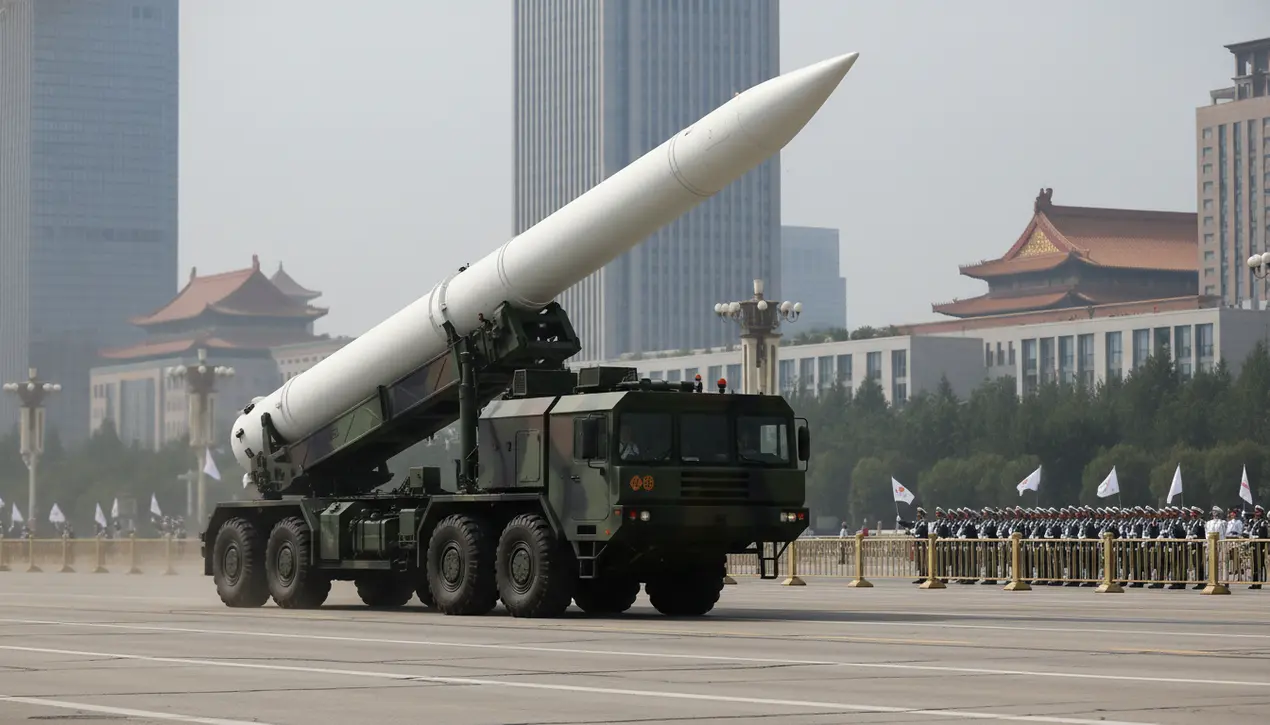
Politicsconflict & defenseMilitary Operations
China's HQ-29 Missile Interceptor Compared to US Systems.
OL
Oliver Scott
3 hours ago7 min read2 comments
After a fifteen-year development cycle shrouded in the kind of secrecy that defines great power competition, China's unveiling of the HQ-29 missile interceptor during its September Victory Day parade was more than a ceremonial display; it was a strategic signal with global ramifications. This land-based system, also designated the Red Flag-29, is engineered to engage targets in the near-space region, outside the Earth's atmosphere, placing it squarely in the high-stakes domain of exo-atmospheric interceptors.Mounted on a formidable six-axle transporter-erector-launcher, the HQ-29 is not a standalone weapon but a calculated piece of a multi-layered ballistic missile defense (BMD) architecture, designed to protect critical national assets from incoming threats. When we analyze this development through a political risk lens, the immediate comparison is to the United States' Ground-Based Interceptor (GBI), the cornerstone of its homeland defense, and the Terminal High Altitude Area Defense (THAAD) system.The HQ-29 appears to occupy a strategic niche, potentially enhancing China's area denial capabilities and complicating the strategic calculus for any potential adversary. The risks here are profound; the deployment of such systems can create a destabilizing dynamic where one nation's defensive shield is perceived by another as an enabler for offensive action, potentially triggering a new phase in the arms race.Historically, we've seen this play out from the Cold War's Anti-Ballistic Missile (ABM) Treaty debates to contemporary tensions. The technological maturity suggested by its public parade indicates China has closed a significant gap, moving from theoretical research to operational capability.This advancement forces a recalibration of regional power balances, particularly concerning Taiwan and U. S.forward-deployed forces in the Pacific. The scenario planning must now account for a theater where advanced BMD systems from multiple major powers are operational, increasing the complexity and potential miscalculation in a crisis.While official details remain sparse, the visual and logistical profile of the HQ-29 suggests a sophisticated command-and-control network, likely integrated with over-the-horizon radars and satellite-based early warning systems, a capability once the exclusive domain of the U. S.and Russia. The long-term consequence is a world where the technological threshold for strategic defense is being systematically lowered, not raised, inviting more nations to invest in technologies that could, in a conflict, be used to degrade an opponent's second-strike capability. This isn't merely a new weapon; it's a shift in the foundational assumptions of global security, and its ripple effects will be felt in diplomatic channels, arms control negotiations, and defense budgets for decades to come.
#editorial picks news
#China
#HQ-29
#missile interceptor
#ballistic missile defense
#military technology
#US rivals
Stay Informed. Act Smarter.
Get weekly highlights, major headlines, and expert insights — then put your knowledge to work in our live prediction markets.
Comments
Loading comments...
© 2025 Outpoll Service LTD. All rights reserved.